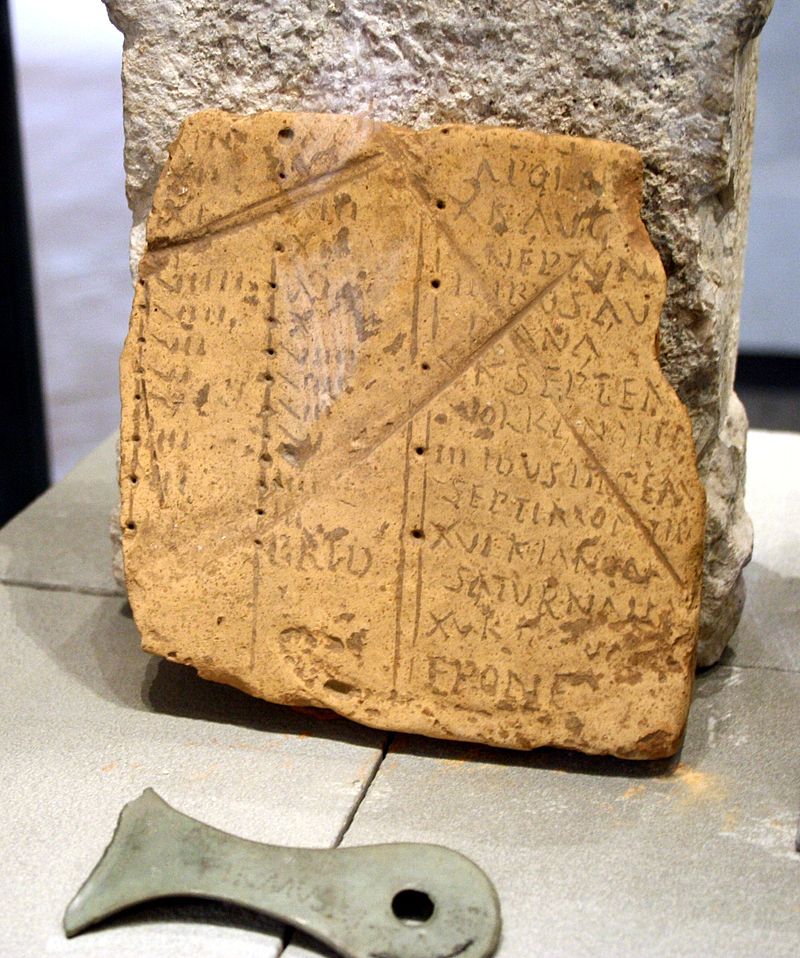
The Roman calendar, also known as the lunar calendar, was probably created by Romulus himself around 753 BCE. The calendar had 10 months from Martius (March) to December. The winter season was not part of any month and therefore 61 days were not included in the calendar. The recorded 304 days were broken into six 30-day months and four 31-day months, based on the cycles of the moon. Calends (from the Greek καλειν “to announce”) were the first day of the month, matching with the “announcement” of the new moon. Nones marked the half moon and were 8 days before the Ides, which were halfway through the month on the day of the full moon. Dates were referenced to these 3 days each month.
Because this calendar was 304 days long, it quickly misaligned with the seasons. Around 700 BCE, King Numa Pompilius amended the calendar by shortening the months slightly and adding the months of Ianuarius (January) and Februarius (February), increasing the calendar to 355 days. Occasionally, the pontifex maximus of Rome would add an intercalary month between February and March to realign the calendar with the solar year.
Source: “The Roman Calendar.” 2018. https://www.timeanddate.com/calendar/roman-calendar.html. Accessed 7 Mar 2018.
Image: Wikipedia Commons, public domain. https://commons.wikimedia.org/wiki/Category:Roman_calendar_(pre-Julian_…
